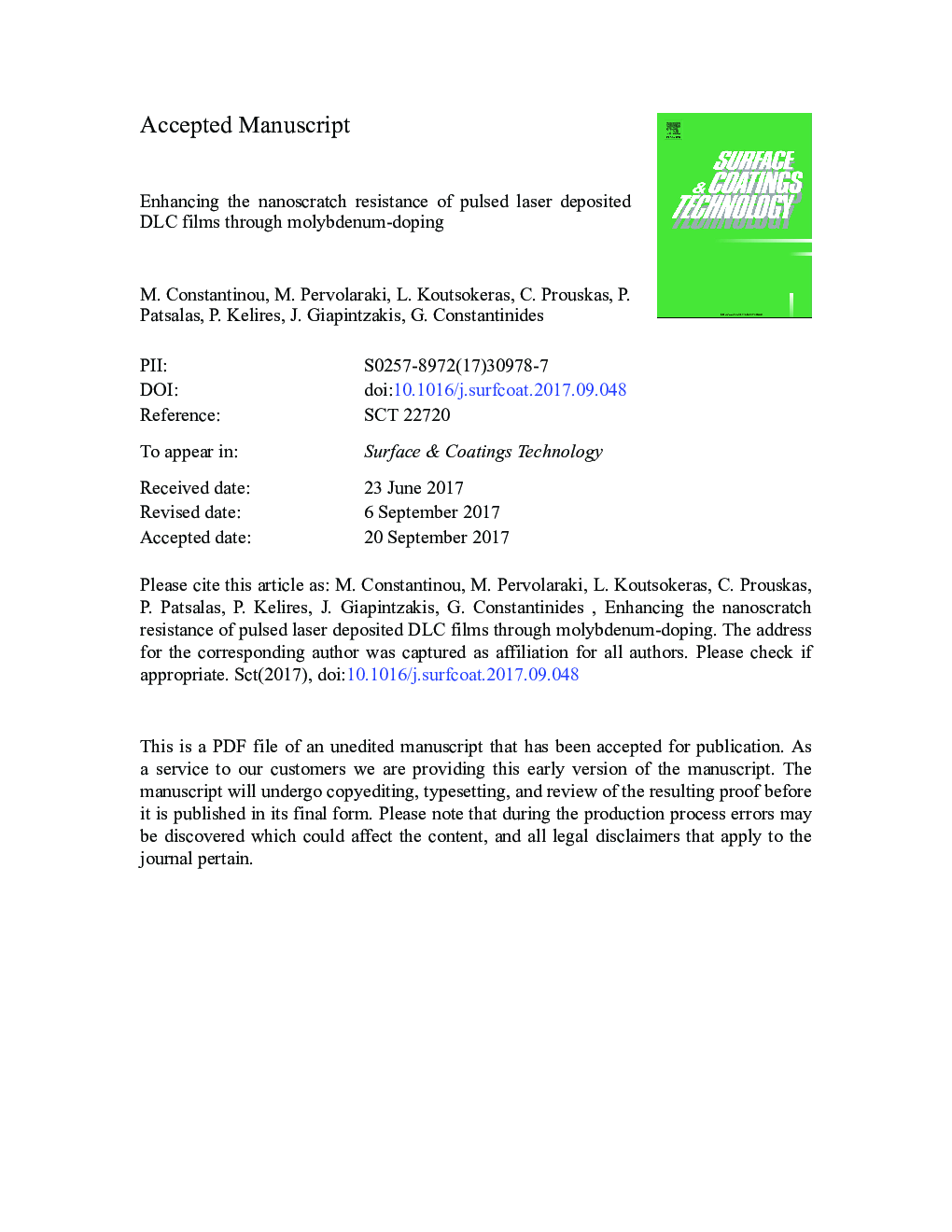| کد مقاله | کد نشریه | سال انتشار | مقاله انگلیسی | نسخه تمام متن |
|---|---|---|---|---|
| 5464390 | 1517553 | 2017 | 33 صفحه PDF | دانلود رایگان |
عنوان انگلیسی مقاله ISI
Enhancing the nanoscratch resistance of pulsed laser deposited DLC films through molybdenum-doping
دانلود مقاله + سفارش ترجمه
دانلود مقاله ISI انگلیسی
رایگان برای ایرانیان
کلمات کلیدی
موضوعات مرتبط
مهندسی و علوم پایه
مهندسی مواد
فناوری نانو (نانو تکنولوژی)
پیش نمایش صفحه اول مقاله

چکیده انگلیسی
Pulsed laser deposition was used to grow DLC and molybdenum-doped DLC (DLC:Mo) films, with metal contents up to 3.2 at.%, on silicon substrates. The microstructural details of the films were investigated using X-ray reflectivity (XRR), X-ray photoelectron spectroscopy (XPS), atomic force microscopy (AFM), scan electron microscopy (SEM), and energy-dispersive X-ray spectroscopy (EDS). Residual stresses were quantified through curvature measurements while the nanoscale mechanical properties of the films were probed using an instrumented indentation platform in the nanoindentation and nanoscratch mode, respectively. The deposition conditions used in this study resulted in an amorphous carbon matrix with sp3 content of 77 at.% and density of 2.9 g/cm3. Molybdenum-doping reduced the percentage of sp3 hybridization within the amorphous carbon matrix and generated Mo-C bonds as detected through XPS. The increase in the molybdenum content reduced the residual stresses which can be related to the percentage reduction of the highly directional four-fold coordinated carbon atoms and the subsequent release of the strain energy in the system. Furthermore, the resistance to penetration of the DLC:Mo films was also reduced which again could be attributed to the severe graphitization of the amorphous carbon matrix. The effect of molybdenum on the coefficient of friction (COF) was of secondary importance with deviations from the COF of pure DLC on the order of ± 12%. In contrast, all DLC:Mo films deposited herein exhibited higher critical loads to failure/delamination with DLC:Mo3.2 at.% showing the highest enhancement (+ 87% compared to pure DLC). This improvement on the critical load to failure can be traced back to (a) the graphitization and softening of the amorphous carbon matrix that increased the ductility of the matrix, (b) the formation of the Mo-C bonds that can operate as obstacles to the micro-fracture processes and (c) the reduction of the residual stresses that increased the mechanical capacity of the film/substrate material system.
ناشر
Database: Elsevier - ScienceDirect (ساینس دایرکت)
Journal: Surface and Coatings Technology - Volume 330, 1 December 2017, Pages 185-195
Journal: Surface and Coatings Technology - Volume 330, 1 December 2017, Pages 185-195
نویسندگان
M. Constantinou, M. Pervolaraki, L. Koutsokeras, C. Prouskas, P. Patsalas, P. Kelires, J. Giapintzakis, G. Constantinides,